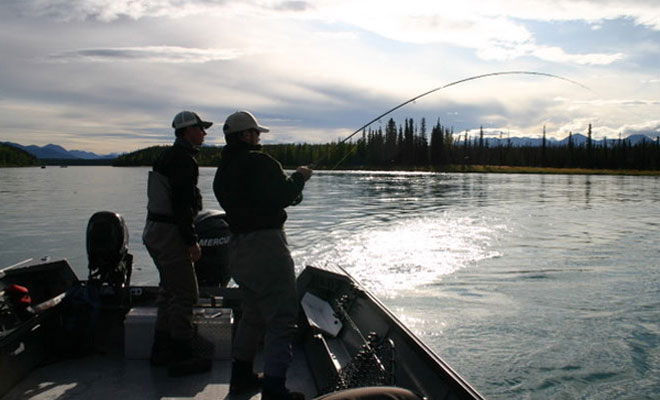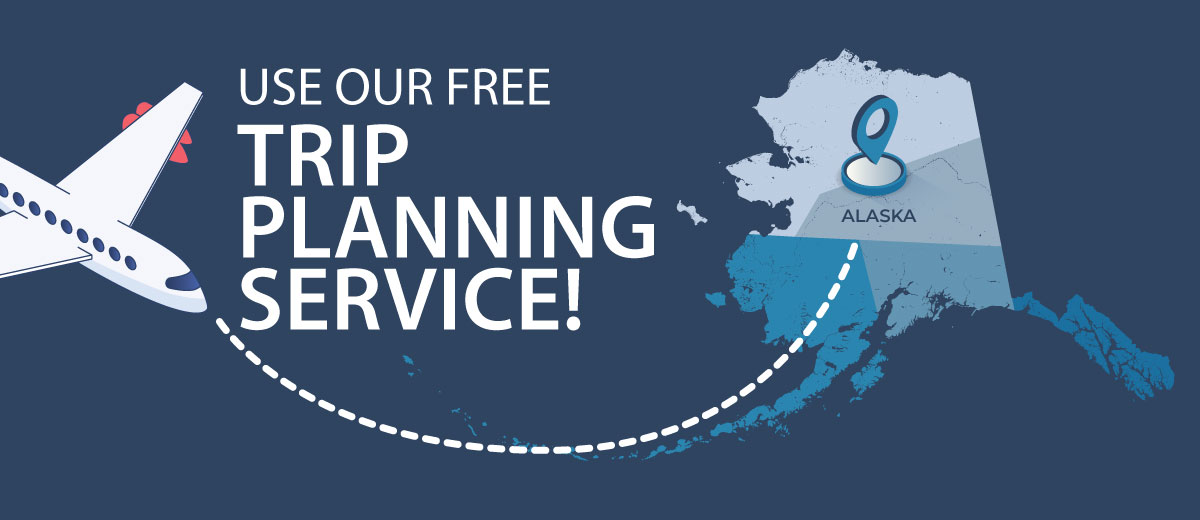 Story & Photo By Nick Ohlrich
Story & Photo By Nick Ohlrich
As summer draws near and rivers begin to swell into their summer size, a quick buffing-up on the practice of reading water probably can’t hurt. I spend the majority of my time fishing the middle Kenai below Skilak Lake. This area of the Kenai is motorized, but it is also a popular area for folks in drift boats and rafts—throw in some gravel bars and navigating a boat through that madness can get exciting.
The first few miles below Skilak Lake can be very tricky to run if you don’t know where the main channel (winter channel) is. This area is very wide with a slow current, making reading water difficult. Faster water helps define deep and shallow water as well as obstacles such as rocks. Fortunately, the gravel bars up there are soft and made of pea gravel, keeping the consequences of a mistake small, but it will still bring your boat to a fairly quick stop, destroy your prop and beat up some of your ego as well, while onlookers chuckle.
Just like anything reading water takes time and practice; proper research before going out will let you know what ability level is required to run that river safely, and if you should attempt it. The best way to familiarize yourself with new water is to have a person with knowledge of that system take you out and show you the ropes. If you do not have that option or are a fan of DIY and exploration, make sure you bring gear that can fix whatever you may break, get you unstuck and keep you warm and comfortable if your day-trip suddenly turns into more. Remember Gilligan’s Island.
Below are a few common tattletales of what lies beneath the surface on most Alaska river systems:
High Banks
The high-bank side of the river is usually where the main channel is and the deepest water. Keep in mind that deep water or main channels are not immune to the occasional boulder or stump lurking; keeping an eye on the water surface at all times is mandatory when navigating rivers.
Swirls ’n Boils
Trout and the lower unit on my outboard love these. Swirling and boiling water typically mean this spot is deep and the boil is caused by a deep rock or dip in the river bottom causing the disturbance on the water surface. Lots of food circulates through these areas, making it great trout habitat.
Slicks / Glassy Water
These are easier to see when traveling upriver. When water looks slick or glassy, be careful, as there is a gravel bar lurking not too far below the surface. Swirling water typically can be seen on the downstream side of these “slicks” as the river drops off below the gravel bar. A seam edge on the side of the slick is a great indicator as to where the bar ends and the river becomes deep again.
Riffles
A riffle is caused by water moving over a shallow, rocky gravel bar causing the surface of the water to be choppy. Riffles are also typically much shallower than gravel bars with a slick water surface, creating a great opportunity to get your watercraft stuck.
White Fluffies
That’s just my name for a whale tale or the disturbance the water makes when a boulder is hiding just below the surface. Use whichever term you want to use to describe a white, frothing disturbance that leads to a loud bang or loss of a lower unit if smacked is up to you.
Once again, seeing these obstacles is easier when traveling upriver, as distinct seam lines and an eddy is formed from the rock. Slow current, especially in deep spots, is a great place for rocks to hide; the lack of current does not give much warning on the water’s surface, so having knowledge of the river system first is key.
Tying it Together
The surface of the water is one of the best ways to see obstacles, as it often “shows” you what lies beneath. Being able to identify the various clues takes time and practice; fortunately that means more time on the river. Remember, rivers change every year, especially in the spring/early summer when increasing water flow washes debris downriver, clearing out old obstacles and creating new ones. Have a fun and safe season!
Nick Ohlrich is co-owner/guide for Alaska Drift Away Fishing. For more info check out their website at www.guidekenairiver.com or contact them at info@guidekenairiver.com or 1-877-999-8677.


